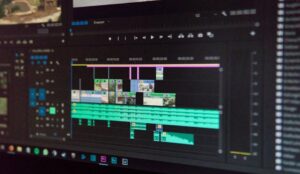The Evolution of Responsive Design in an Era of Foldable Devices
In the dynamic world of web design, responsive design has revolutionized the way websites interact with various devices. With the advent of foldable devices, it has become essential for designers to adapt their strategies further. In this article, we will delve into the evolution of responsive design, explore the impact of foldable devices, and identify the best practices for optimizing websites for these innovative screens.
Understanding Responsive Design
Responsive design refers to the approach of creating websites that provide an optimal viewing experience across a wide range of devices. This includes resizing, hiding, shrinking, or enlarging elements to ensure ease of readability and navigation. The primary goal is to ensure that a site is user-friendly, regardless of the device being used.
Key Features of Responsive Design
- Fluid Grids: Use proportions instead of fixed pixel dimensions.
- Flexible Images: Images adjust to the surrounding environment.
- Media Queries: Apply different styles for different device characteristics.
The Rise of Foldable Devices
With the introduction of foldable smartphones and tablets, the landscape of device design has shifted dramatically. Manufacturers such as Samsung and Huawei have pioneered this technology, offering users a two-in-one experience that combines portability with a larger display area.
Impacts on User Experience
Foldable devices present unique challenges for web designers:
- Screen Aspect Ratios: The ratios can change dynamically, demanding a flexible design approach.
- Multitasking Capabilities: Users may run multiple applications side by side, requiring better layouts for simultaneous viewing.
- Diverse Use Cases: From watching videos to productivity tasks, foldable devices cater to various activities, necessitating adaptable designs.
The Evolution of Responsive Design for Foldable Devices
As foldable devices proliferate, responsive design must evolve. Here are some significant trends:
1. Adaptive Layouts
Designers will increasingly need to create layouts that can adapt not just to varying screen sizes but also to diverse orientations-landscape and portrait. This requires a more sophisticated approach:
| Layout Type | Purpose | Use Case |
|---|---|---|
| Single Column | Easier navigation | Reading mode |
| Multi-Column | Enhanced multitasking | Productivity apps |
| Grid Layout | Visual appeal | Photo galleries |
2. Enhanced Touch Interaction
Foldable devices with larger screens allow for more interactive content. This can include:
- Larger clickable areas
- Gestures for navigating through content
- Customizable touch-friendly buttons
3. Performance Optimization
With higher resolution displays, ensuring that images and graphics are responsive without losing quality is critical. Efficient image formats like WebP, combined with lazy loading techniques, can significantly enhance performance.
Benefits of Responsive Design in the Era of Foldable Devices
Implementing responsive design specifically for foldable devices offers numerous benefits:
- Improved User Engagement: A seamless experience fosters longer visits and lower bounce rates.
- SEO Advantages: Google favors mobile-friendly websites, so responsive designs can enhance search rankings.
- Cost-Effectiveness: Adapting existing sites instead of creating separate versions can save resources.
Practical Tips for Designers
- Test Across Devices: Regularly test designs on various foldable devices to understand real-world usability.
- Prioritize Critical Content: Ensure essential information is easily accessible on both large and small screens.
- Utilize Frameworks: Leverage CSS frameworks like Bootstrap or Foundation for responsive grid layouts.
Case Study: Successful Adaptation of Responsive Design
One important case is that of “XYZ Corp.” This company redesigned its e-commerce platform to accommodate foldable devices. Post-redesign, they reported:
| Metric | Before | After |
|---|---|---|
| Average Session Duration | 2 mins | 5 mins |
| Bounce Rate | 50% | 30% |
| Conversion Rate | 2% | 4% |
First-Had Experiences
Many designers have reported firsthand how the rise of foldable devices has enhanced their creativity. For example, they can now envision enhanced storytelling capabilities for brands using multiple screens effectively. Designers say that with a larger interactive canvas, the potential for creating immersive experiences is boundless.
Conclusion
The evolution of responsive design in the era of foldable devices presents both challenges and opportunities. As technology continues to progress, it’s crucial for designers to stay informed and adaptive. By embracing new design strategies and enhancing user experience through responsive design, we can ensure that websites remain relevant and engaging in this ever-changing landscape.











